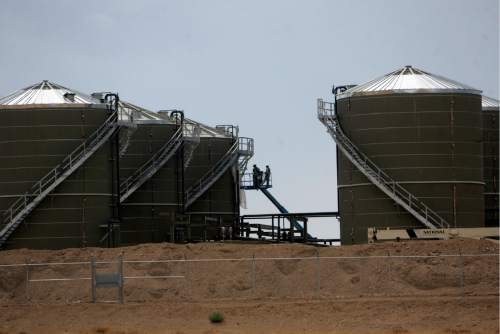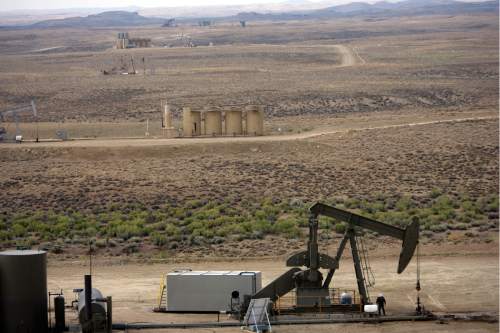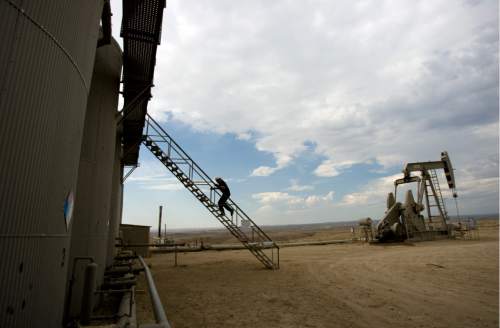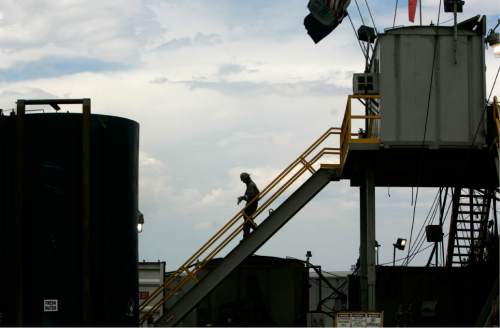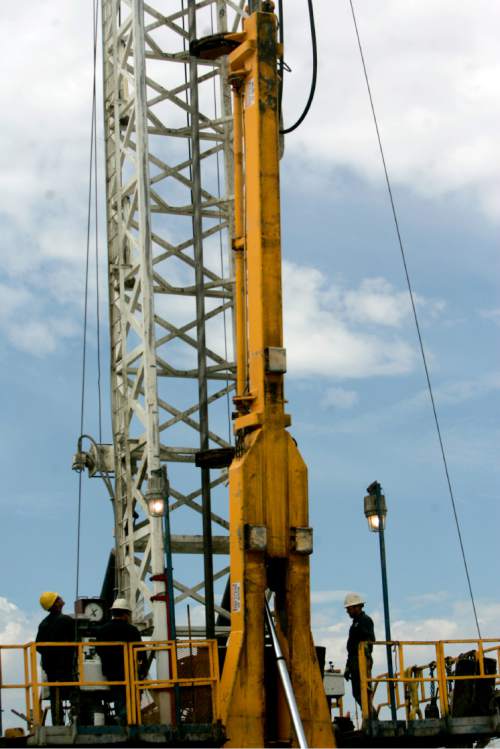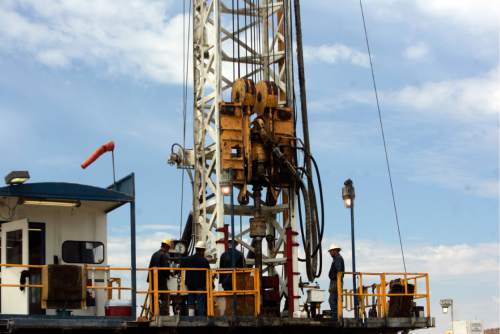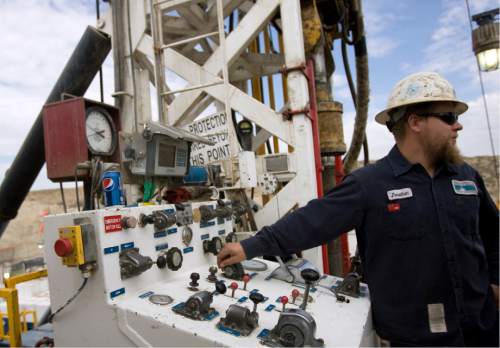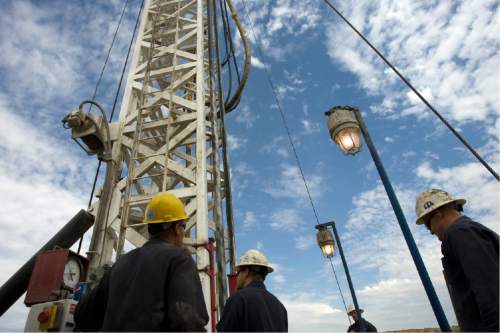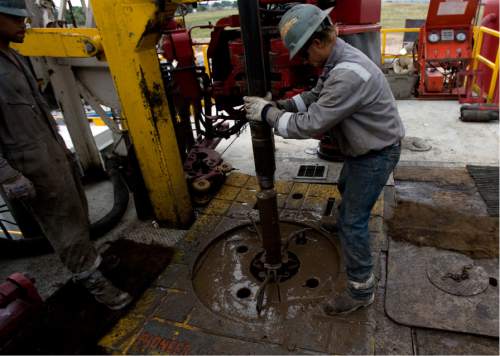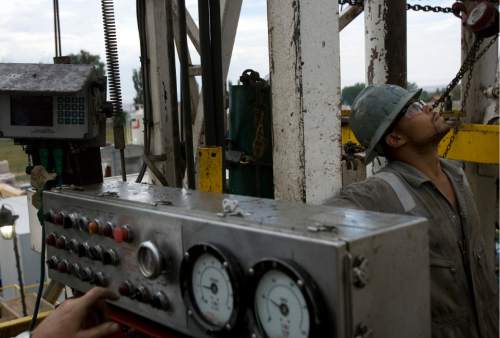This is an archived article that was published on sltrib.com in 2016, and information in the article may be outdated. It is provided only for personal research purposes and may not be reprinted.
The Bureau of Land Management last week wrapped up a six-year environmental analysis of a massive infill drilling program for the Uinta Basin's Monument Butte unit, which holds the state's largest proven oil reserves.
Under the BLM's preferred alternative, Newfield Exploration Co. would, over a period of 16 years, drill all 5,750 oil and gas wells it proposed. That plan relies on directional drilling to reduce the project's footprint in an already affected field covering 119,000 acres south of Myton. The infill project is needed to recover remaining oil and gas with new wells and by injecting water into hydrocarbon-bearing formations to coax further production over the 40- to 50-year life of the project.
Utah's largest oil producer, Newfield already operates about 3,400 wells there, on 40-acre spacings. By drilling many new wells from existing pads, the infill project would concentrate its impacts to spots already served by existing roads and pipelines. These provisions are needed to protect habitat and the Pariette Wetlands.
The project area contains no sage grouse areas that the BLM has recently identified for special protections, but it does harbor two species of rare cactus as well as prairie dogs.
The preferred alternative identified in the Environmental Impact Statement (EIS) would still allow for 10,122 acres of additional surface disturbance, enabling Newfield to develop 226 miles of new roads and pipelines; build 21 new compressor stations and expand three others; and construct a gas-processing plant, 13 water treatment and injection sites, 12 gas and oil separation plants and six water pump stations. The company sought wider rights-of-way that would have resulted in 16,000 acres of disturbance.
The infill project is expected to yield 335 million barrels of oil and 540,669 million cubic feet of natural gas from the Green River formation and nearly 7 trillion cubic feet from "deep gas development" through 2035, according to the EIS.
Utah officials called the project one of the single largest investments in Utah, bringing between $19 billion and $35 billion, but they were critical of the first draft of the EIS, released in 2013. That version called for more directional drilling and a lot fewer new roads. These restrictions would result in 610 fewer wells, and a "waste" of the equivalent of 60 million barrels of oil, according to comments submitted by the state's public lands policy chief, Kathleen Clarke.
State trust lands comprise 11 percent of the project area, and Clarke calculated that draft preference would reduce income off these lands, to be deposited in a fund supporting public schools, by $42 million.
In the final EIS, the BLM agreed with Utah that it had overestimated the technically feasible reach of directionally drilled wells. Accordingly, the preferred alternative allows Newfield to drill more vertical wells, thus increasing the pads and roads required to serve the oilfield. The EIS is subject to public comment through Aug. 8 and a final decision will be issued after that.
Federal officials emphasized provisions addressing the region's wintertime ozone crisis, largely blamed on oil and gas development.
"Given the air quality concerns in the Uinta Basin and the potential for a nonattainment designation, protecting air quality was a primary concern as we developed this EIS," said Jenna Whitlock, BLM's acting state director. "As a result, the EIS contains strong measures to control emissions that lead to ozone formation, a major air pollution concern."
The BLM did study an alternative that would have electrified the Monument Butte field with a 190-mile network of transmission and distribution lines and 11 electrical substations as a way to eliminate emissions associated with powering drill rigs, pump houses, processing plants and processor stations.
The agency passed on electrification after Newfield argued that such an investment would render the project economically infeasible.
Brian Maffly covers public lands for The Salt Lake Tribune. Maffly can be reached at bmaffly@sltrib.com or 801-257-8713.
Twitter: @brianmaffly


